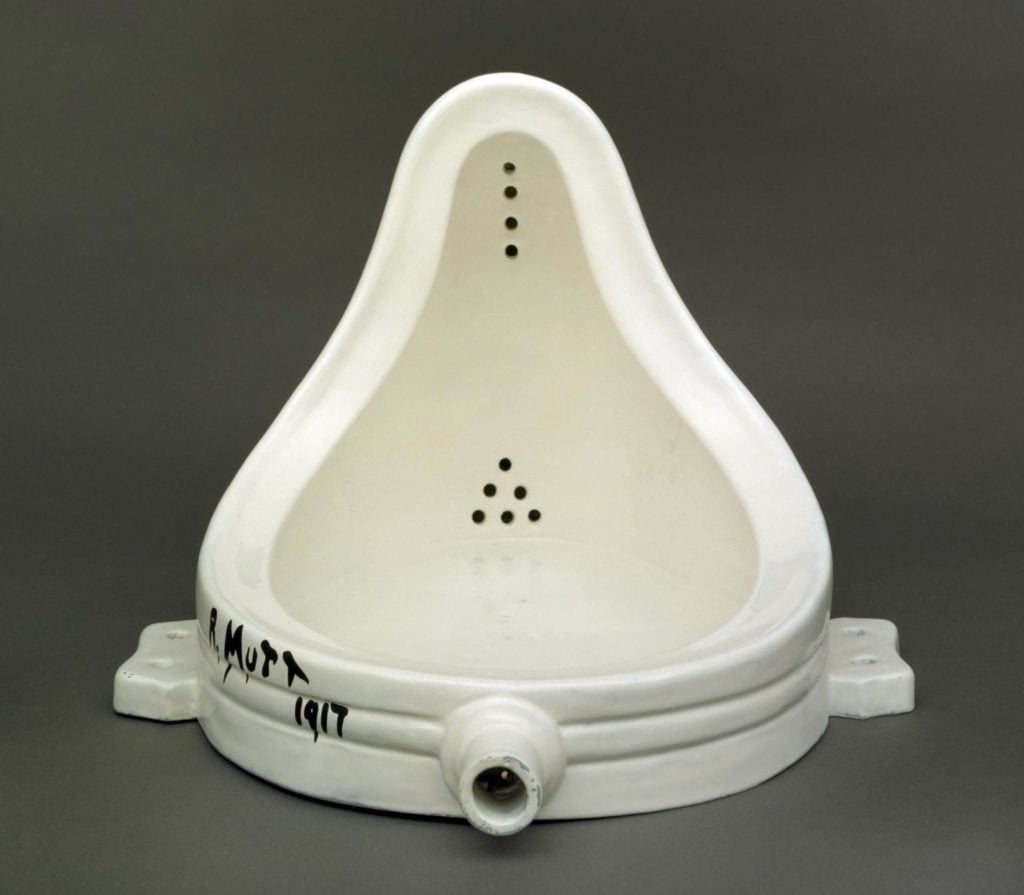Art World
Saying This Secret Duchampian Password Will Get You Into Museums for Free (Maybe)
Some museum staffers aren't even in on the secret.

Some museum staffers aren't even in on the secret.

Brian Boucher

Word is leaking out, as it were, about how a simple art-historical fact can get you free admission to more than a dozen museums worldwide on April 9, courtesy of Dada master Marcel Duchamp.
But you’ll have to know a code word.
It all relates to Duchamp’s first Readymade, the infamous Fountain (1917), a simple urinal from a plumbing supply shop that was inscribed with the faux signature “R. Mutt.” Richard Mutt was supposedly the name of the plumber who had created the urinal, which, through the simple act of calling it art, Duchamp would transform into an artwork. It was a gesture that would change art for good, paving the way for movements like conceptual art and appropriation art.
This year marks the centennial of the work, which created a scandal when Duchamp submitted it anonymously to the first juried art show organized by the Society of Independent Artists, in New York; Duchamp and other artists would resign in protest from the jury when the work was rejected.

Marcel Duchamp, Fountain, (1917). Courtesy of Tate.
Come April 9, the work’s birthday, all you have to do is identify yourself as R. Mutt or Richard Mutt at the admissions desk between 3 and 4 p.m., and you can get free admission, according to a press release, to institutions including New York’s Museum of Modern Art, Berlin’s Hamburger Bahnhof, Paris’s Pompidou Center (that is, if the strike ends and the museum reopens), the Städel Museum in Frankfurt, Kunsthalle Basel, the National Museum of Modern Art in Kyoto, and the Israel Museum, in Jerusalem.
But code words are meant to be a secret, right? And this one seems to be so hush-hush that when artnet News attempted to get confirmation of the initiative from press offices at a few of the participating museums, the response was unequivocal: “We aren’t offering any kind of special access on that date,” writes a press rep at Tate Modern. “We are not part of the project,” says a press officer at the Hamburger Bahnhof.
The response from MoMA’s press department, though, seems to provide a little wiggle room: “We cannot confirm MoMA’s participation.”
UPDATE: Wednesday morning, a press representative of MoMA contacted artnet News to say that “I can confirm that The Museum of Modern Art is not participating in a free ticket offer.”
So what gives?
The project does, indeed, seem too fanciful to be true. According to the announcement, a dedicated men’s room in each institution will be a unisex bathroom, “to provide space for everyone wanting to honor the centennial … with impromptu readings, homages, proclamations, and performances.” (Curiously enough, the project happens to come at the same time that admission to bathrooms for transgender people is increasingly contested in the US.)
The enigmatic initiative is organized by Thomas Girst, who, in his day job, is Head of Cultural Engagement for carmaker BMW, and has penned or co-authored books such as The Duchamp Dictionary, The Indefinite Duchamp, and Aftershock: The Legacy of the Readymade in Post-War and Contemporary American Art. Reached by phone on Monday, he insisted that it’s all for real.
One museum that readily confirmed its participation is the Philadelphia Museum of Art, which stewards a legendary collection of the artist’s work. Its holdings include key works such as the so-called Large Glass and Étant donnés, which the artist worked on in secret for years and which, says the institution, Jasper Johns called “the strangest work of art in any museum.”
“Duchamp loved a good hoax, secret, riddle, and prank,” says a page on the museum’s website. Performers from Pig Iron Theatre Company, says the museum, will give a Fountain-themed performance “in a special location.” The page confirms that admission is free with the code word for one hour, starting at three p.m., and the museum will even distribute stickers emblazoned with the words “R. Mutt 1917.”
“We thought we could contribute to the anniversary by doing something jovial, in the spirit of Duchamp, with his questioning of art institutions that was sophisticated and funny at the same time,” said Girst.
Why three o’clock? Girst has an answer, pointing out that Duchamp and some of his peers were deep into numerology. There are three Standard Stoppages, Duchamp’s proposed new units of spatial measurement. There are nine (three times three) so-called “malic moulds” in the Large Glass; and the artist once told a BBC reporter, according to Girst’s Duchamp Dictionary, that “Three is everything.”
The curious and clandestine effort is far more in keeping with the artist’s prankster side, Girst maintains, than a standard academic symposium—although, it should be said, museums and galleries from Paris’s Centre Pomidou to the Haus der Kulturen der Welt in Berlin and Francis M. Nauman Fine Art in New York are staging symposia and exhibitions.
A more participatory work, Girst thought, also is in tune with an assertion by the artist in a lecture. Duchamp proposed that the creative act “is not performed by the artist alone” but that “the spectator brings the work into contact with the external world by deciphering and interpreting its inner qualifications and thus adds his contribution to the creative act.”
Let’s just hope that word reaches the admissions staff in time.